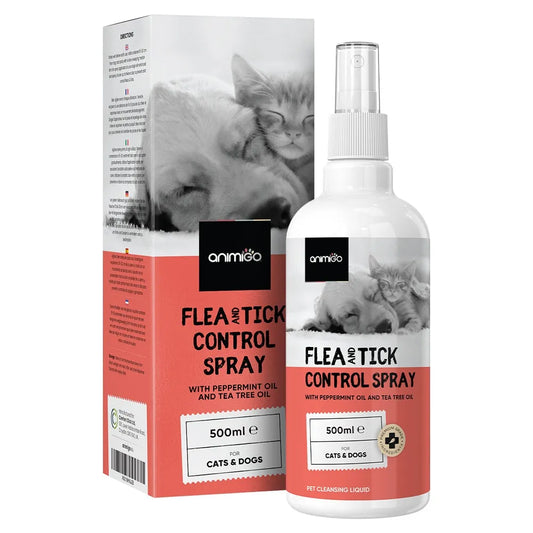Worming in Cats
Worried your cat could have worms? Worms in cats, whilst not the most pleasant issue, is unfortunately quite common. Cats can acquire worms in a number of different ways, and with the different varieties out there they can be quite difficult to avoid! To help you understand what these worms are, the signs to look out for, as well as, most importantly, how to get rid of worms in cats, we have summarised everything you need to know in one place.
Worried your cat could have worms? Worms in cats, whilst not the most pleasant issue, is unfortunately quite common. Cats can acquire worms in a number of different ways, and with the different varieties out there they can be quite difficult to avoid! To help you understand what these worms are, the signs to look out for, as well as, most importantly, how to get rid of worms in cats, we have summarised everything you need to know in one place.
What are worms in cats?

Did you know these worms are actually parasites? This is because they survive by living off their host. Worms in cats most commonly affect cat’s digestive function as they live inside their intestines and then lay a high volume of eggs which are spread through faeces. As a result, they’re very easy for your cat to get and also easy to spread from one to another. There are a number of types of these worms and each one has their own distinct characteristics, including what they look like, how they spread, where they live in your cat and how dangerous they could potentially be.
Types of worms in cats
There are 5 main types of worms your cat could encounter (although potentially far more). These are roundworms, tapeworms, hookworms, whipworms and lungworms. The first four are known as intestinal parasites because, as the name suggests, they live in cat’s intestines. Whilst all worms are an issue for your cat, each one is different and so, therefore, it is important you understand what each one does and how they can affect your cat, in order to identify the type of worm and the action you need to take next.
Roundworm
Their appearance often compared to spaghetti, roundworms are long and white and are usually ingested by cats as eggs. After this, they grow and mature in their intestinal tract where they can either live or move around their body. If they move, they can end up in the lungs or potentially stick in tissues which results in cysts. When a cat becomes pregnant, however, they can start moving again and end up in their milk glands. As a result of this, they can be passed down to kittens through their milk, which is why roundworms are very common in young cats.
Adult roundworms can produce a huge number of eggs in a single day - up to 200,000! This makes them a big issue to deal with and very easy to spread around and contaminate other cats and pets with. In addition to this, their eggs are known to have a solid shell, meaning they can live for long periods of time while waiting for a host. Consequently, they’re very easy for your cat to pick up simply, even by sitting in a contaminated environment!
Tapeworm
When it comes to worms in cats, tapeworms are probably the most common and well known. This is because they can also occur in humans, although less likely than with cats and other animals. You can get a tapeworm by ingesting raw animal flesh that contains the tapeworm cyst (such as a bird or rat) or by consuming an intermediate host, for example, a fly or bug. This is why they are more common within cats than in people.
Tapeworms are flat and one of the longest of the intestinal worms, being around 4-5 inches long when grown. Once ingested, they live and grow within your cat’s intestines and, being a parasite, they use their teeth to latch onto the wall of the intestines where they take in nutrients to survive. This can cause an issue for many cats, especially those more vulnerable such as kittens and older cats, as it means there are fewer nutrients to go around which can lead to deficiencies. With a fit and healthy cat, therefore, you may not even realise they have a tapeworm until seeing it in their stool where it appears as small segments similar in appearance to a grain of rice.
Hookworm
Hookworms in cats are small and thin and can be found throughout Europe and the UK. Similarly to tapeworms, a cat can receive the parasite from ingesting hookworm eggs or larvae where it then grows to a full-sized adult hookworm in their intestines. To survive, the hookworms attach themselves to the intestines walls and live off the host’s blood. This can cause a number of issues for cats and can even cause anaemia in those most vulnerable. In addition to this, a cat infected with hookworm can be prone to other concerns, making it a potentially very serious problem.
Whipworm
These look thin and wiry, almost like a piece of thread, with one end more enlarged than the other. They live within the beginning of a cat’s large intestines, also known as the cecum. Unlike other intestinal worms, they require less nutrition and blood to survive and also produce fewer worm eggs. This can be beneficial for the health of your cat but have a downside in that they are harder to spot and diagnose, meaning your cat can have them for a very long time without exhibiting any noticeable symptoms. Luckily, whipworms aren’t found as widely in the UK as other types of worms, but they are still important to consider.
Lungworm
Although not intestinal worms, these pesky parasites can still be an issue for cats. Lungworm larvae can be found on infected snails, slugs and even frogs. Once the larvae have been ingested and mature into fully grown lungworm, they don’t just stay in one place. As the name suggests, they can move into areas of the body that affect the lungs, such as the heart and blood vessels. This can be very serious for your cat and can lead to numerous respiratory and heart problems. In addition to this, the worms can begin to produce their own larvae, which can end up at a point where it can be potentially fatal if nothing is done about it.
Worms in cats overview
| Worm type | How do cats get it? | What does it look like? | Where does it live? | Worm-specific symptoms | |
|---|---|---|---|---|---|
| Roundworm | Ingested as eggs found within the soil | Long and white like spaghetti | Cat’s intestines | Coughing and abdominal pain | |
| Tapeworm | Eating infected fleas or raw meat | Long (4-6 inches) and flat | Cat’s small intestines | Weight loss | |
| Hookworm | Ingesting eggs or being in contact with larvae | Small and thin | Cat’s small intestines | Coughing and anaemia | |
| Whipworm | Ingesting their eggs | Pieces of thread with an enlarged end | Cecum (large intestines) | Weight loss | |
| Lungworm | Eating larvae in slugs, snails or frogs | Slim and around 2.5cm in length | Heart and blood vessels | Coughing |
How do cats get worms?
As a whole, it is not difficult for your cat to end up with worms, as they can be so easy for them to encounter. While each type of worm is different and lives in slightly different ways, there are some common methods for them to end up within your cat. Unfortunately, some of these are more difficult to avoid than others, however, if you know what to look out for, you can be one step ahead of these pesky parasites!
- Larvae or eggs within the soil
- Raw meat with worm cysts (e.g birds or rodents)
- Infected intermittent hosts (e.g fleas)
- Mother’s milk
- Infected snails, slugs or frogs
Symptoms of worms in cats
So now you know where they come from, what are the signs of worms in cats? Just like with the source of the worms, the symptoms can vary depending on the type your cat may have and there can be some more serious symptoms associated with a specific worm. In general, however, these are the most common to look out for that could signify a worm infestation in your cat:
- Worms in stool
- Vomiting
- Diarrhoea
- Lethargy
- Swollen abdomen (potbelly)
- Nutritional deficiencies
- Dehydration
- Dragging their bottom
- Lacklustre coat
- Flaky skin
How to treat worms in cats

If you’ve noticed some of the symptoms of worms in cats, have identified some in areas your cat spends time or have other pets with worms, thankfully, there are a number of things you can do to help. So if you’re wondering how to get rid of worms in cats, the best thing to try is a cat wormer product. These come in many different shapes and forms including tablets, sprays, powders and even cat worming drops. These all vary in use and ingredients and the different forms are designed to find the one that suits you. When it comes to the best wormer for cats though, you want to choose one that will get rid of the worms but without causing harm to your furry friend. The best way to do this is through using a natural worm treatment for cats. But how do these work? A natural cat dewormer works to kill the worms living within your cat’s intestines so that they can then be naturally excreted in their still.
So what about prevention? The most ideal way to deal with worms in cats though is to do what you can so that they don’t get the worms in the first place. This may be easier said than done as sometimes you can’t always avoid them, but you can take regular steps using preventative cat wormer products. These are some of the best cat wormer products as, when used correctly and on a regular basis, they help to protect from the threat of worms. Many of these cat dewormers also act for your cat’s intestinal health which can be affected by these pesky parasites.
You can also take some other preventative measures to help your cat avoid getting any worms. This includes avoiding any known areas where the eggs or larvae may be, not letting your cat eat anything they may bring in such as bird or mice as well as worming cats, dogs or other pets in your household. If you’ve managed to successfully get rid of worms, make sure as well to thoroughly clean your cat, their bedding and areas they spend a lot of time in to ensure no eggs or larvae have been left behind.




















